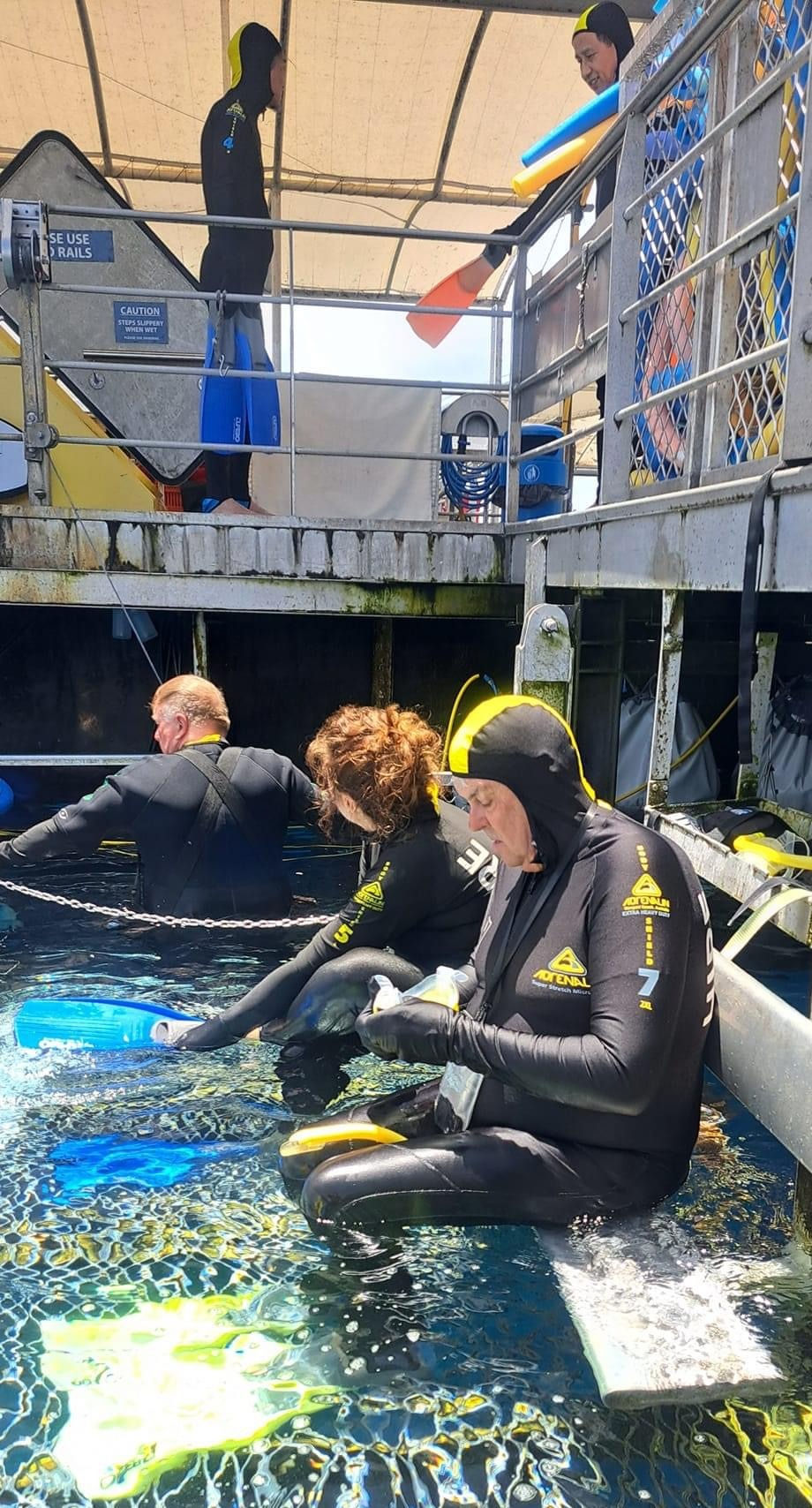Great Barrier Reef and Friends (aka Koalas)
- Candace Ahlfinger
- May 7, 2023
- 4 min read

The first thing we noticed as we flew into Cairns, Australia, was how green the area is, in sharp contrast to most of the other Australian areas we had visited. Lush greenery covered the ground and mountainsides. We flew over a blue bay that teased us as we looked forward to our visit to the Great Barrier Reef. Mountains seem to surround the airfield to give visitors a warm welcome. Our arrival in February coincides with one of Cairn’s rainiest months, but we were fortunate that our days were clear.

Cairns sits at the edge of the Daintree Rainforest, the oldest rainforest in the world. This rainforest is a World Heritage site that borders the shores of the Great Barrier Reef, another World Heritage site. We were fortunate to visit the rainforest and ride on the Skyrail Rainforest Cableway, which has two stops, Red Peak and Barron Falls, on the way to Kuranda, a rainforest village. The 10-minute ride to Red Peak was bumpy and noisy over each tower, but between towers a quiet peace descended, only broken by the sounds of occasional birds and crickets. The second portion of the ride took 15 minutes where we alighted at Barron Falls to admire massive waterfalls gushing from the top and cascading to the bottom of the mountain.

Kuranda is very touristy, but we enjoyed a lunch break and doing some window shopping at the numerous stores. The bus met us in Kuranda, and we made our way to Cairns and our hotel for the next two days, the Pullman Cairns International, which is located near shopping, dining, and a lively boardwalk.

The next morning, we drove to Port Douglas. Along the beautiful, winding drive were miles and miles and miles of deserted beaches that could be glimpsed through the towering rain forest trees. The question in my mind was, “Why are they deserted? School is back in session. Could it be a darker answer? Sharks? Sea snakes? Should I ask or just go blithely into the water to snorkel?” I didn’t voice my concerns; sometimes ignorance is bliss and we were about to get in the water!

Our ship, Quicksilver, was docked at the Port Arthur Marina. Quicksilver was our transportation for the 1.5 hours to the research platform which would be our base for our visit to the Great Barrier Reef. The multi-tiered research base offered many optional activities on the Agincourt Reef including helicopter rides and snorkeling with a marine biologist. Included were the glass bottom boat, snorkeling, lunch and more. We stuck with the included activities and quickly suited up in provided Lycra suits required for everyone who wanted to get into the water to protect them from the sun and jellyfish. The suits cover everything—except the face. (I wanted to know why I couldn’t have my face covered, also! Yes, I knew I would have on a mask and snorkel, but that still leaves some skin uncovered.)

The Lycra suit, the warm water, and the great dive deck made it easy to get in and out of the waters. A yellow rope gave those who were anxious a line to hold onto, but we swam out into the outer area roped off with white. The current was extremely strong, but the fish and corals we saw made it worthwhile. I even saw a shark which, thankfully, was not too close. Other marine animals I saw included, but are not limited to, Butterfly Fish, Sturgeon, Clown Fish, Blue Tang, Red Bass, Manta Ray, Maori Wrasse, and Seargent Major Drummer. The current made the swim back to the yellow section a workout, so we headed to the buffet lunch as soon as we got back on the station.

After a delicious lunch, we enjoyed a cruise on the semi-submersible that gave us more views of the corals making up the reef. Sea turtles also swam by our portholes as a guide provided interesting information about all we were seeing. All too soon, it was time to return to Port Douglas and then to Cairns for a relaxing evening.

Our bus driver, aka tour guide, had told us about Ochre, a restaurant which highlights local foods. The restaurant proved to be as good as we were told and we dined on many Australian delicacies including crocodile and emu. (Crocodile is very different from alligator.) Enjoying excellent food while overlooking the water was a great way to end the evening.
Our final morning in Cairns held one of the best surprises. Our guide, Rob Lippitt, managed to find a koala that we could hold—in the casino across the street. We all quickly made the trip to touch one of these precious creatures and have our picture snapped. (Queensland is one of only three Australian states in which it is legal to hold a koala.)

What a fun ending to a neat stay before we boarded yet another plane—this time to Sydney.
I'll be posting more information about our trip through Australia, New Zealand, and Fiji.
I'd love for you to subscribe to my blog. Just click here!
For our Melbourne info, follow this link.
For info about Tasmania, click here.
Read about our Adelaide and Uluru Adventure
Comments